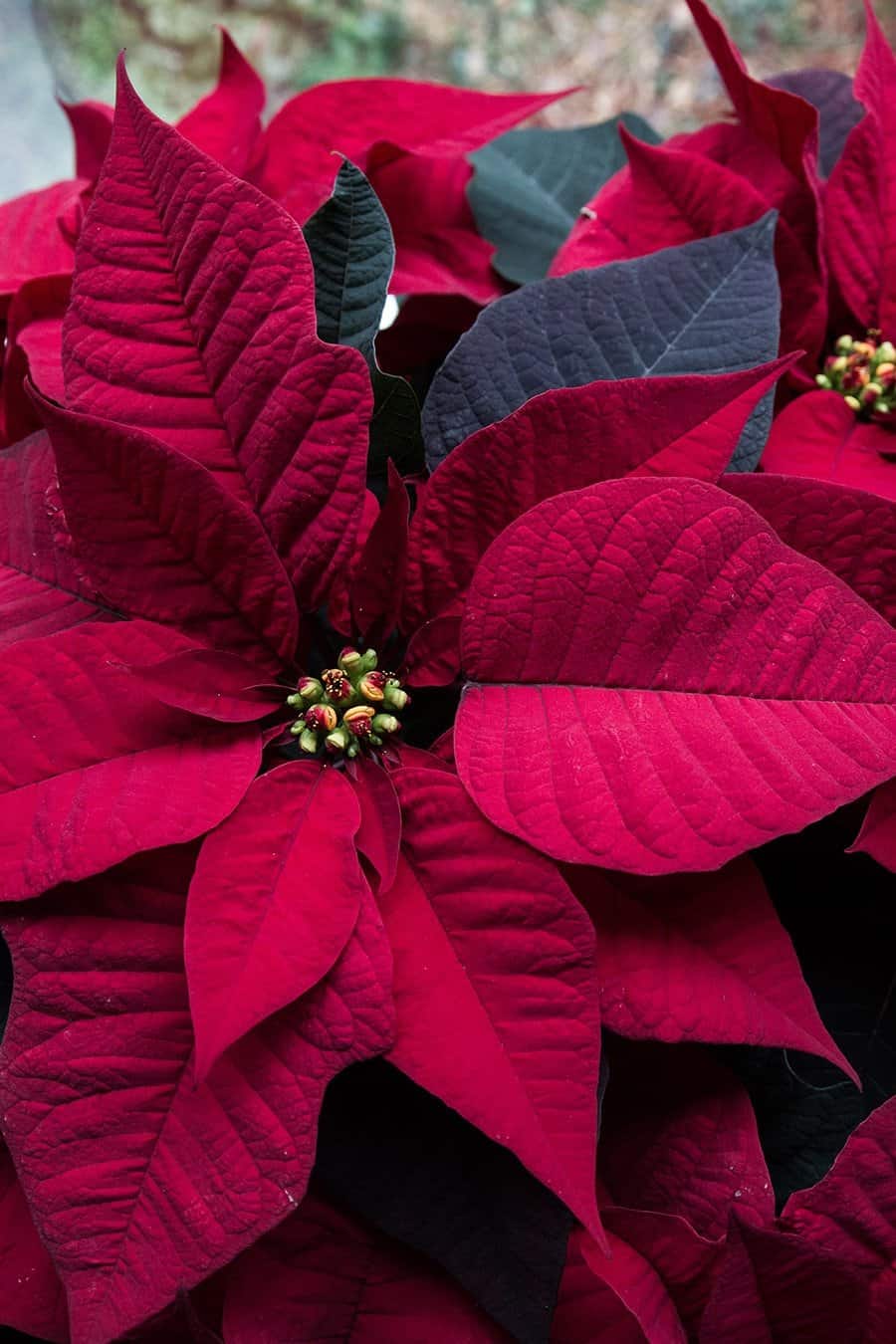
There was a time when holiday poinsettias (Euphorbia pulcherrima) were always red. But now the beautiful pink, white, plum, cranberry and variegated versions make them all the more irresistible. And what’s more, they’re so much bigger. With care, poinsettias can stay in good condition indoors over the winter months.
Poinsettias like consistent moisture, and quickly wilt when their soil becomes dry. The time to water is when the soil surface feels dry, and the weight of the container is lighter. A large pot with three plants clumped together will be filled with roots and constantly thirsty; it may need a drink every day.
Dropping flowers and foliage is a sign a poinsettia is in distress. The actual flowers are the small yellow berries surrounded with the colourful bracts (petal-like structures). Poinsettias like everything in moderation — flowers and bracts will begin to drop if the plant is in a cold draft or the room lacks humidity or the soil in the pot becomes dry or the light is too low. The best location is near a window with bright indirect light. Turn the plant each day to prevent the foliage from straining for light. Night temperature in the room should be no lower than 15°C.
When light, temperature and soil moisture needs are adequate, poinsettias will keep their colourful display until mid-spring. Colour will begin fading from the bracts in April and May, and some foliage may fall. If you want to keep the plant going through the summer, cut the stems back to four inches (10 cm), and repot the plant, removing some of the old compost and replacing it with fresh soilless mix. (The cuttings can be rooted to make additional plants, using powdered rooting hormone, clean pots and soilless mix.) Feed with a balanced fertilizer (such as 10-10-10) every four weeks. The poinsettia can summer outdoors in indirect light, but avoid direct sun on the foliage.
By late summer the poinsettia will be quite full, and probably taller than it was when first purchased. (Plants grown in greenhouses are given solutions to keep them bushy and short.) In September, bring the poinsettia indoors to a suitable location. To induce the colourful bracts, the plant must be kept in total darkness for 14 hours every night. Cover it with a black plastic bag in early evening, removing the bag in the morning. Do this for eight weeks, and the plant will once again provide a dazzling colourful display.

Leave a Reply